Change is good when technology is in the mix
Staying up to date on the latest innovations provides benefits for you and your patients.
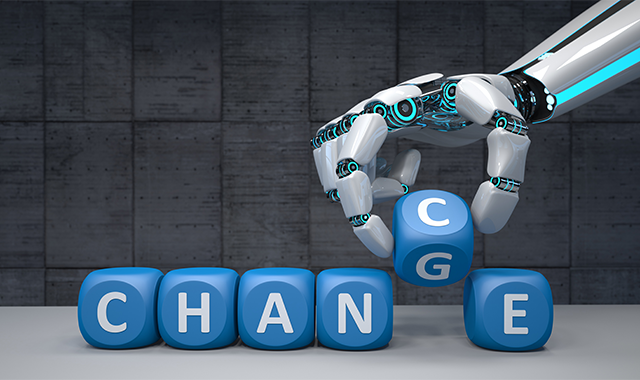
I love technology! I absolutely love it! Anybody want to go back to belt-driven handpieces? Didn’t think so.
We’re the luckiest generation of dentists, but one of my few regrets is I’m past the halfway point in my career. That means I won’t get to use as many of the incredible changes today’s graduates will find routine by the time they’re in my place in their careers.
However, advancement means change, and change means adaptation. Most of us prefer the status quo over integrating change into our systems. But honestly where’s the fun in that? Dentistry is about improving our patients’ lives. You can’t do that with a belt-driven handpiece.
The focus of this issue of Dental Products Report is to get you out of your restorative rut, and my focus as Technology Evangelist is to routinely encourage you to step outside of your comfort zone. So, this month let’s take a look at ways to help you improve your restorative procedures by using some new concepts and technologies.
Trending article: Using technology for better esthetic outcomes
Anesthesia
Although the technology has been around for a while, I’m still frequently asked about The Wand® or its big brother, The STA®. These systems provide what’s referred to as “Computer Controlled Local Anesthetic Delivery,” or CCLAD for short.
Generally, there are three things that cause pain from dental injections. First is the stick of the needle. Second is the burn from the pH difference between the anesthetic and the human body. Third is the pressure of liquid displacing tissue. It turns out most of this pain can be eliminated by very slow anesthetic delivery.
I’ve never met a dentist who didn’t give perfect injections. However, when I began using CCLAD, patients were singing my praises like never before. It turns out my injections weren’t as painless as I thought. Until they were…if you know what I mean.
CCLAD devices use a system that injects super slowly. Even if you think you can do this, the machine does it better. It’s also a benefit that the handpiece looks much more like a drinking straw than the medieval stainless steel syringe patients are used to seeing.
There’s also a new device from Septodont called the Dentapen. It’s a self-contained system that provides CCLAD in a handheld device. It’s sleek, high-tech looking, and weighs only 40 grams. I haven’t had a chance to get my hands on one yet, but I’m planning on putting it through some clinical trials soon.

Electric handpieces
As we’ve evolved with bonded restorations, preparation designs have changed, but the way we create them hasn’t. Simply put, most offices are still using air turbine handpieces.
I used to be one of those doctors. Then a few years ago, I was asked to help with development of an electric handpiece system. In order to make sure I got enough experience to provide feedback to the company, I switched my primary operatory over to the electric system. I was immediately blown away. You can’t truly appreciate the advantages of electrics until you use them clinically. In a very short time I was hooked. The experience was akin to riding a bicycle and then getting on a Harley. Going back was simply impossible.
My current favorite is the Bien-Air iOptima. It uses an iPad as the controller, and you can dial in the exact RPM. The system is incredibly versatile, offering the ability to do restorative, endo, implants and a piezo scaler.
Prepping with an electric is easier on both doctor and patient. Gear-driven electric handpieces don’t stall, allowing them to operate at lower RPMs. You can prepare with less noise as well. Electrics are to handpieces what digital is to radiography.
Isolation
Battling saliva during bonding procedures is something we all deal with. Isolation is critical to clinical success and efficiency. Fortunately, there are products designed for when it seems like you’re “working under water.”
Isolite 3 from Zyris is the big dog of this category. A versatile system, it provides suction and has a built-in bite block. It also functions as a cheek and tongue retractor as well as providing a bright white LED for illumination and an amber light for bonding. This illumination is tremendously helpful.
For efficiency and ease of use, you can’t do much better. By keeping a dry field, restorations have less chance of moisture-induced sensitivity and a longer life span because of better bonding.
Continue reading on page two...
Magnification
Statistics show more than 80 percent of doctors are working with some type of magnification. If you really want to perform better, it’s a requirement that you see better, so if you really want to up your game, up your magnification!
My modus operandi is to do hygiene at lower magnification because it provides more of a “big picture” view. Being able to see almost a quadrant helps me to understand the overall scheme. However, there are times I want to see closer, and when I’m doing clinical procedures, I want as much magnification as I can get.
I’ve got a couple suggestions to round out your armamentarium. Orascoptic has a couple of products designed to provide multiple magnification options.
First is the Orascoptic EyeZoom which puts three levels of magnification in a single frame. Rotating the barrels of the telescopes moves them to different levels. They’re incredibly comfortable and easy to use.
The second product is the Orascoptic OmniOptic which allows you to swap different telescopes into a single frame. The frames are custom built for the doctor’s optics, and you purchase the telescopes in the magnification levels you desire. This allows you to have just the levels you need. The optics are easy to change, snapping into the frame via secure magnets.
I also recommend some type of auxiliary lighting attached to your frames. I tend to work at 4.5x to 5.5x routinely and increased magnification means more light is needed. However, I recommend you buy a system with variable brightness levels. Working at maximum brightness can create eye fatigue and cause some operators to lose some depth perception. Giving your eyes a break at a lower brightness level can be smart.
Related reading: The top 5 product test drives of 2018
Wrapping up
To do better requires a constant effort, and sometimes knowing where to change to get better can be daunting. I think one of the important things we need is coaching. All of us can benefit by someone making some suggestions. Michael Jordan had a coach, Tiger Woods has coaches, successful CEOs have coaches.
What I take away from that is the simple fact that no matter how good you are at something, there are always things you can do to get better. Oh, and sometimes those things can be outside your box of comfort. So, take a look at some of these suggestions and see if there are ways here or in other aspects of your practice where you can get better. Stepping outside your comfort zone is difficult, but I’ve found it always pays off-big. Keep dreaming and keep improving.
DR. FLUCKE'S TECHNOLOGY UPGRADES
Product Category: Anesthesia
Old Tech: Syringe and Needle
Dentapen
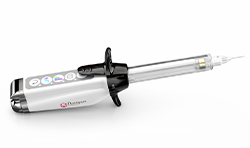
New Tech: Computer Controlled Anesthetic Delivery
Examples:
The Wand® from Milestone Scientific – milestonescientific.com
Dentapen from Septodont USA -
septodontusa.com
Product Category: Handpieces
Old Tech: Belt-drives; air turbines
iOptima
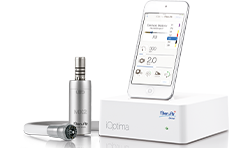
New Tech: Electric motors
Example:
iOptima from Bien-Air –
dental.bienair.com
Product Category: Isolation
Old Tech: Rubber dam
New Tech: Isolation and
retraction systems
Isolite 3
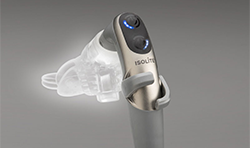
Example:
Isolite 3 from Zyris –
Product Category: Magnification
Old Tech: Standard loupes
New Tech: Multi-magnification loupes
OmniOptic
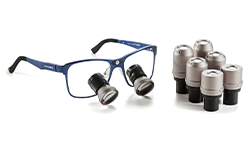
Example:
EyeZoom & OmniOptic from Orascoptic – orascoptic.com
